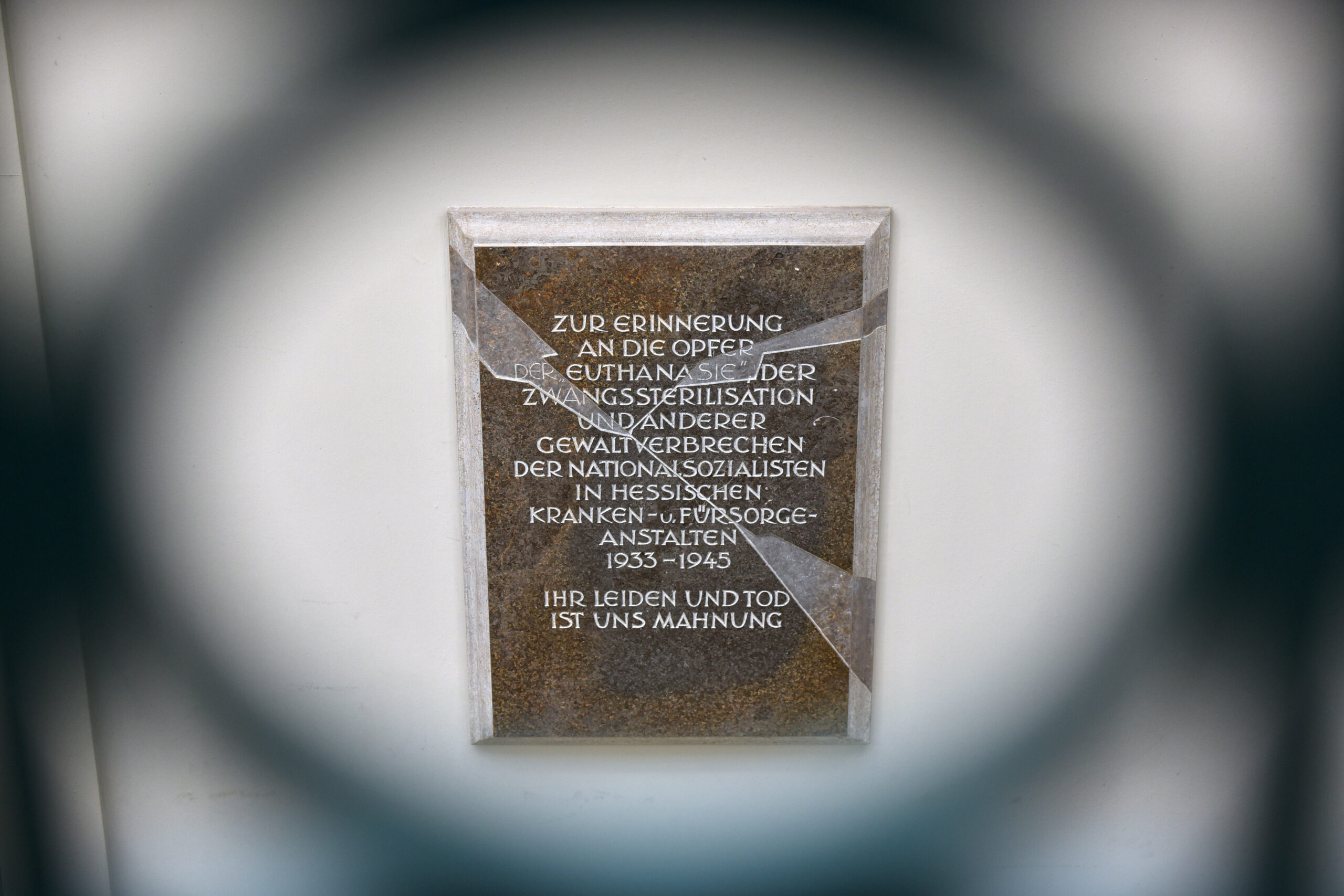With its foundation in 1953, the Public Welfare Association of the German Federal State of Hesse (Landeswohlfahrtsverband Hessen, LWV) took on a difficult legacy. The association took over institutions from its legal predecessors that had been abused by the Nazis to murder ill and disabled people.
All psychiatric hospitals in Hesse and what was then the Kalmenhof Therapy Centre in Idstein (Heilerziehungsanstalt Kalmenhof) were involved in the Nazi “euthanasia” crimes.
Between 1941 and 1945, over 20,000 people were killed: by gas, medication or starvation. Many institutions also served as so-called intermediate and collecting institutions that would deport people to the Hadamar gassing centre, other murder centres or concentration camps.
In 1933, the institution that was then the Breitenau state workhouse (Landesarbeitsanstalt Breitenau) was abused as an early concentration camp. Beginning in the late 1930s, Breitenau served as the Gestapo’s so-called work education camp (Arbeitserziehungslager) for several thousand foreign forced workers and as a collection camp in the process of transferring people to concentration and extermination camps.
Hadamar Memorial Museum is the central place in Hesse where the LWV conducts it remembrance and commemorative work. In 1953, the municipal district (Bezirkskommunalverband) of Wiesbaden set a first signal of remembrance by installing a commemorative relief in the entrance hall of the former killing centre. After 1964, a memorial landscape was created where the people that were killed had been buried in mass graves. There stands a monument bearing the cautionary inscription “Mensch achte den Menschen”, meaning “Man, honour mankind”. A first exhibition was opened in 1983; a permanent exhibition was created for the first time in 1991. In 1991, a plaque was also put up inside Kassel’s Ständehaus, the headquarters of the LWV Hessen, in remembrance of “the victims of ‘euthanasia’, forced sterilization and other violent crimes of the National Socialists in Hessian health and care institutions 1933-1945” (as translated).
Hadamar Memorial Museum is currently working on a fundamentally new concept for its exhibition. It will be expanded considerably and will extend to both wings of the former state sanatorium. The State of Hesse and the Federal Republic of Germany are also contributing to the costs.
Other places of remembrance can be found at the subsidiary locations of the LWV-owned holding company Vitos GmbH in Bad Emstal, Eltville, Friedrichsdorf, Giessen, Haina, Heppenheim, Herborn, Idstein, Marburg, Riedstadt and Weilmünster as well as at the headquarters of LWV Hessen at the Ständehaus in Kassel. A memorial is also located in Breitenau today, the work of which is supported by the LWV.
The remembrance work of the LWV is supported and backed academically by the Department of Archives, Memorial Sites, Historical Collections (Fachbereich Archiv, Gedenkstätten, Historische Sammlungen).
This book contains further information in the German language (PDF-Download).
GESCHICHTE UND GEDENKEN – Orte der „Euthanasie“-Verbrechen in Hessen, LWV Hessen und Vitos GmbH (ed.), Kassel 2019, ISBN 978-3-89203-047-8

